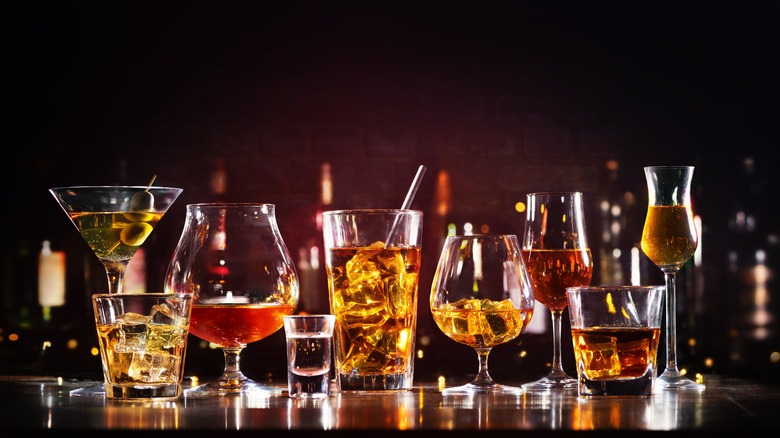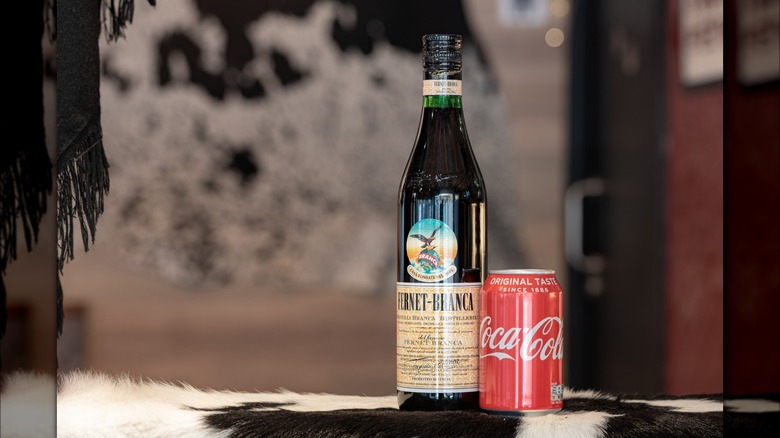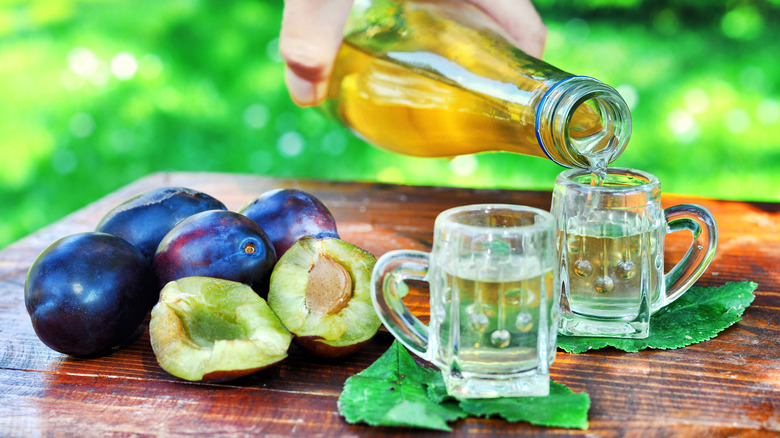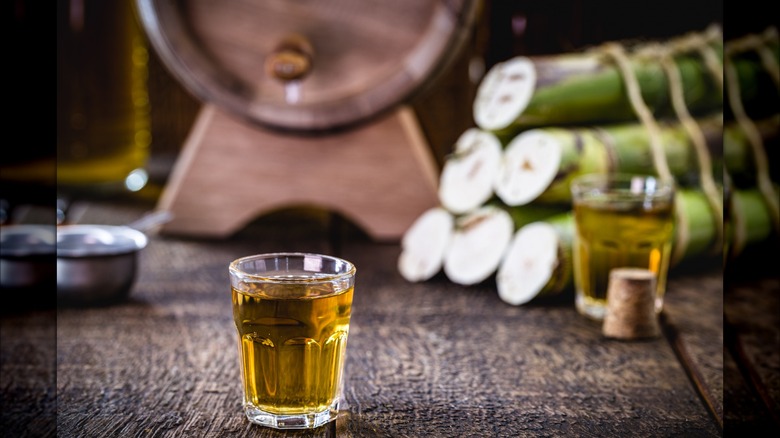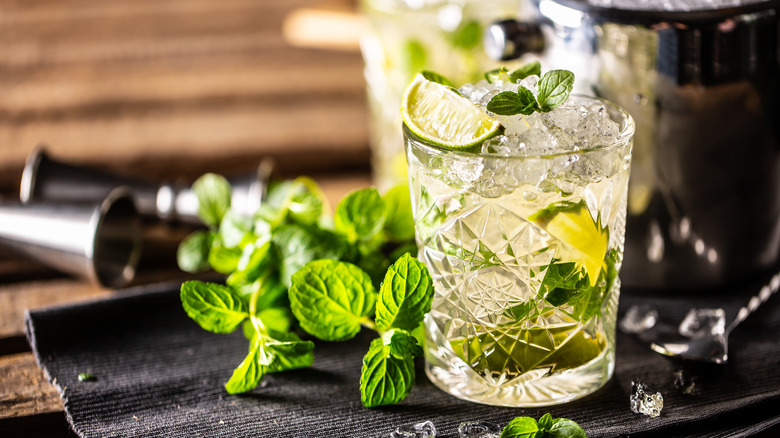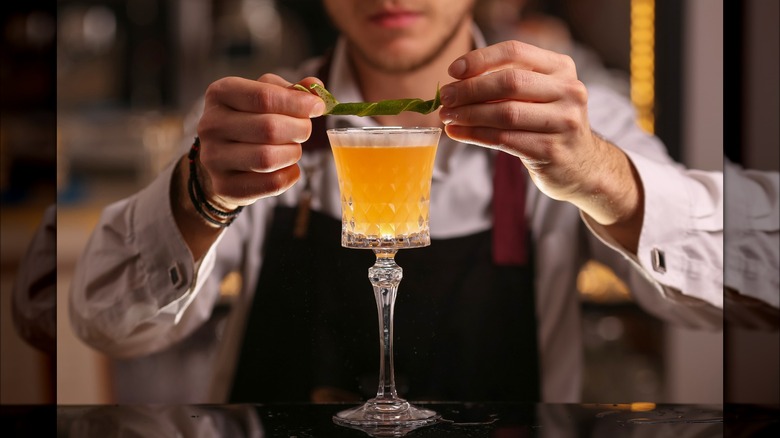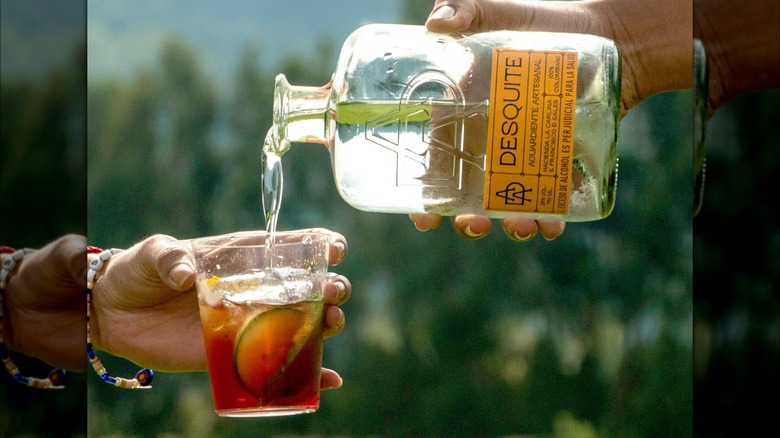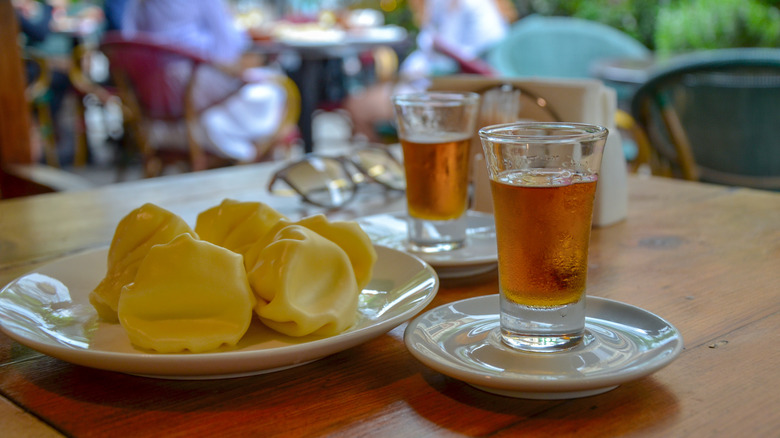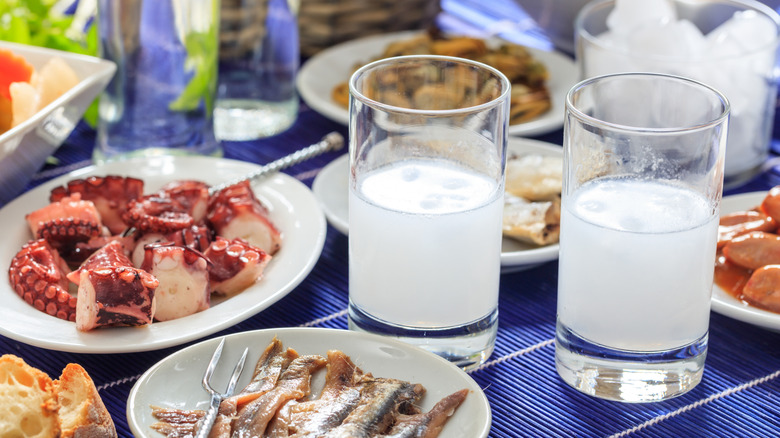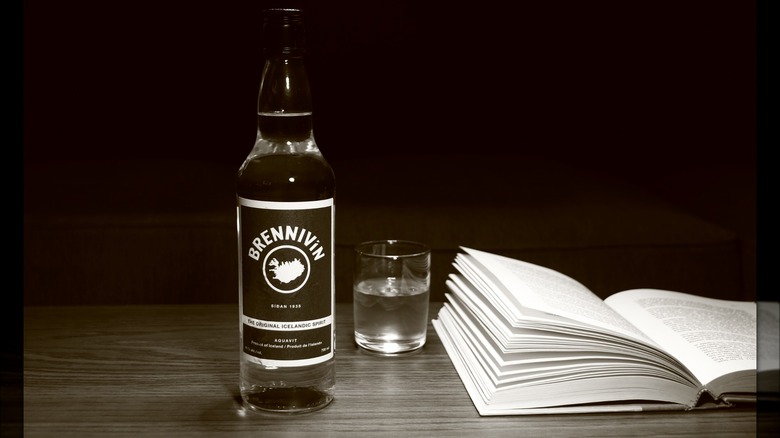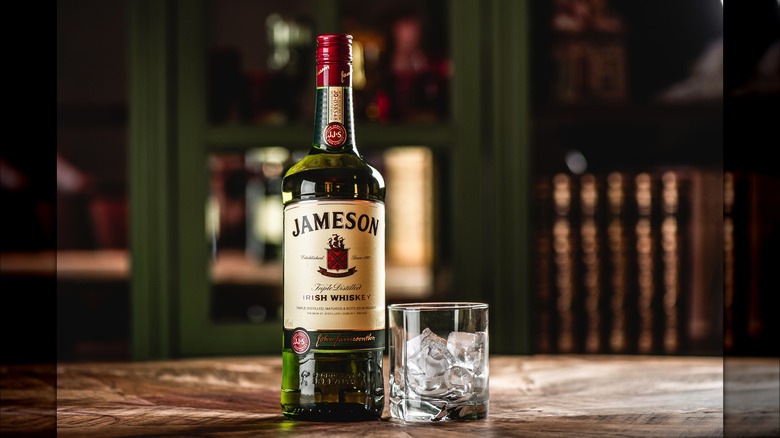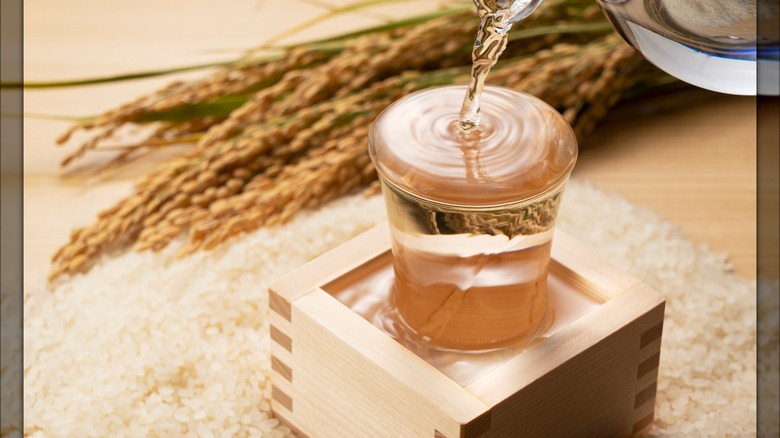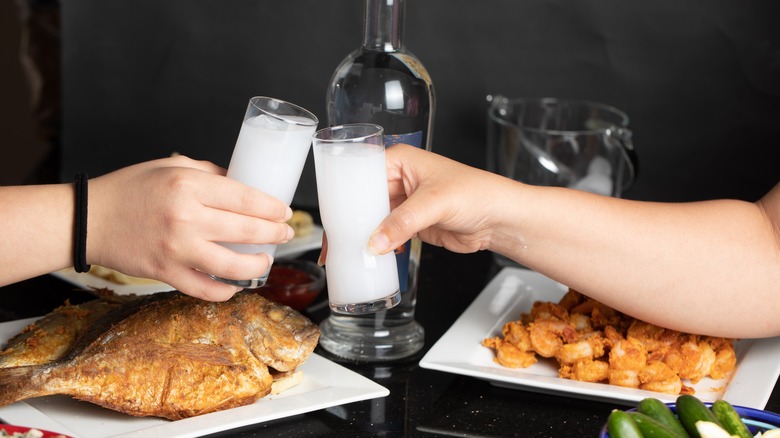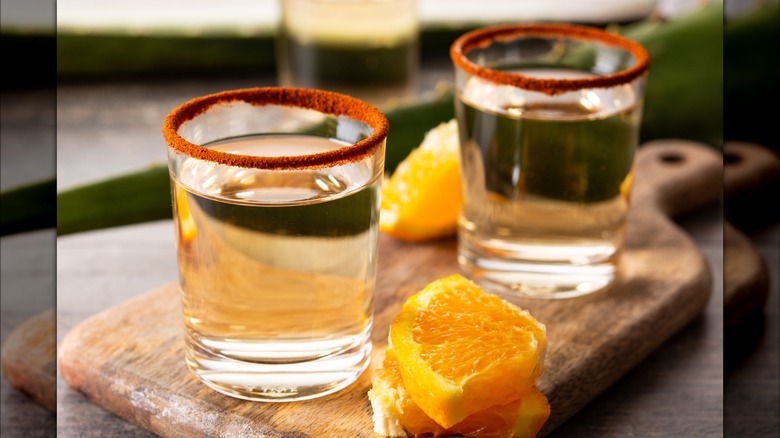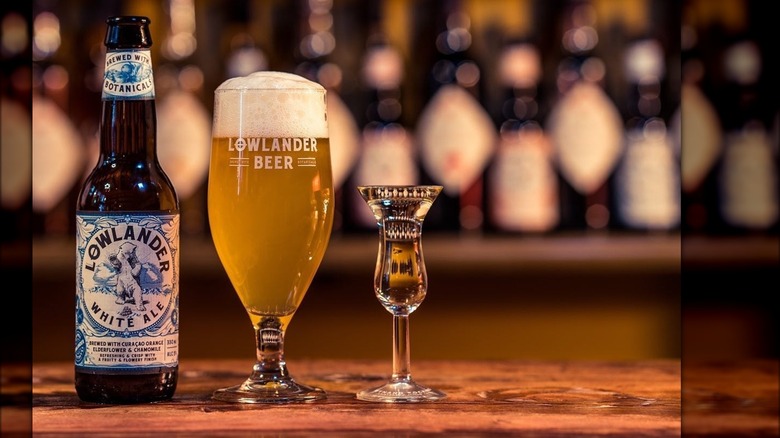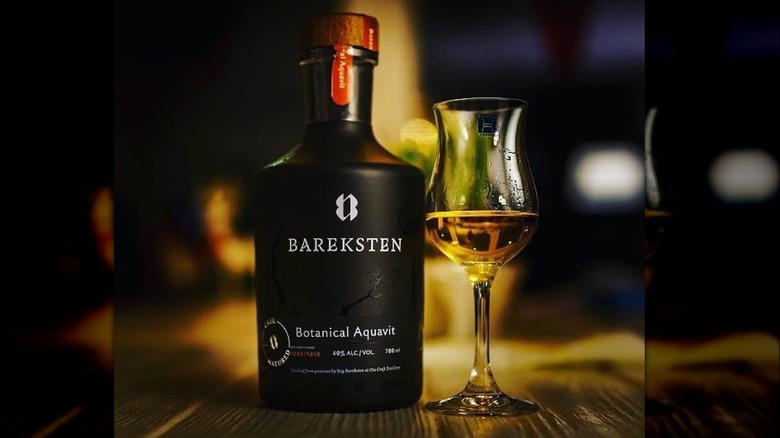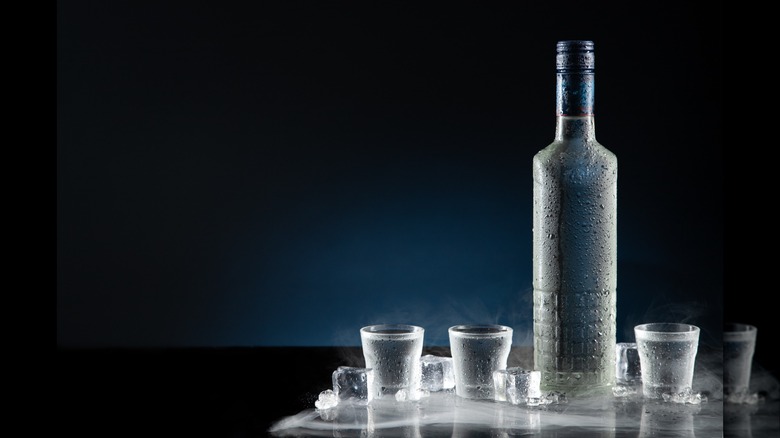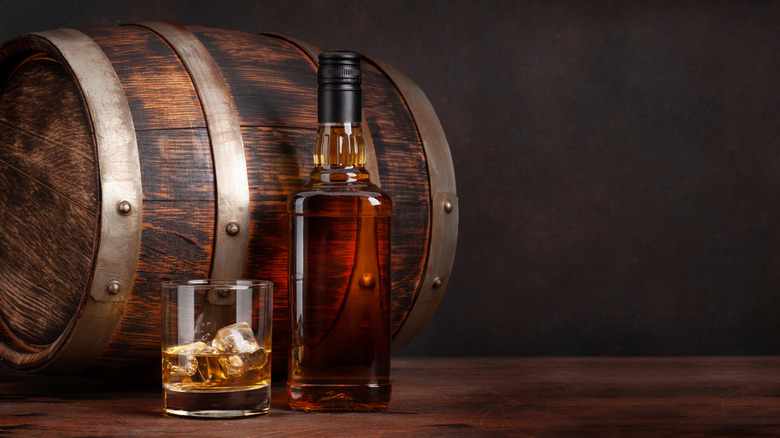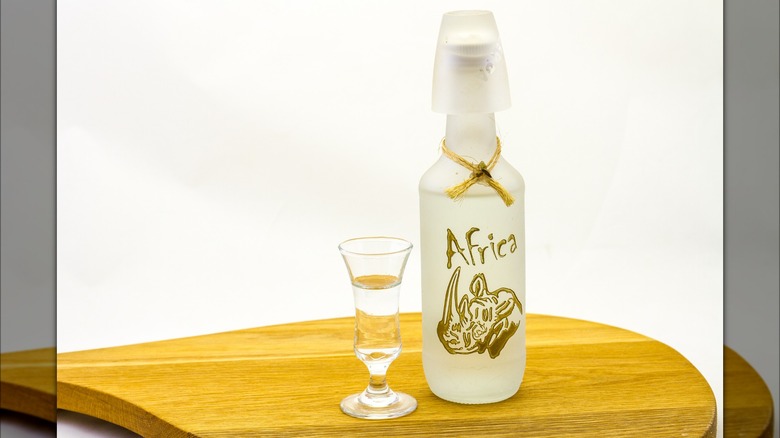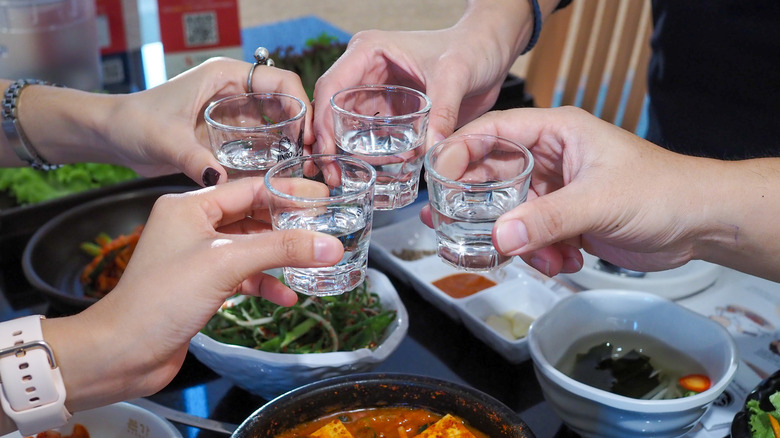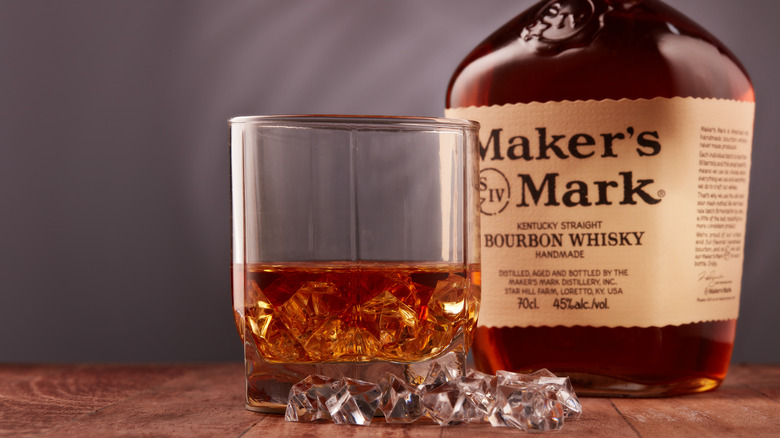The Most Popular Liquors In 20 Countries
When you travel, do you try each destination's specialty cocktail or alcohol? If you're planning an international getaway, you might. Because just like cuisine, each country has its go-to liquor. This choice of spirits is heavily influenced by the country's geography, culture, and history.
While some of these liquors may be popular around the globe, others are little known outside their country's borders. You might not know what's commonplace in the Balkans or the Levant. And while whiskey or rum might be widespread, we stuck with popular liquors that reflect the spirit of each location.
Whether you're globe-trotting or just want to spice up your liquor cabinet, we've got you covered. Through research, travel, and taste-testing, we've rounded up the most popular liquors in different locations. These spirits are loved in their homelands and carry unique traditions that give you a window into each country's culture. So keep reading to explore the wide world of liquor and get a taste of what each place is all about.
1. Argentina: Fernet
Fernet is a bitter liqueur with an intensely herbal flavor. It definitely has a medicinal quality, which is no surprise, seeing how it's made with 27 different herbs, roots, and spices. Among these are camomile, cinnamon, rhubarb, and myrrh — and in A Global Lifestyle interview, descent of the Fernet-Branca line Edoardo Branca claimed the company uses 75% of the world's saffron supply.
Although Fernet-Branca is simply a brand name, this company put fernet on the map, specifically in Argentina. The Fernet-Branca company hails from Italy. However, according to CNN, Argentina is estimated to consume 75% of the global supply and houses the only Fernet-Branca distillery outside Italy. But unlike Italy, Argentineans prefer to mix their Fernet with Coke. This cocktail is a cultural mainstay, and if you simply order a "Fernet," a bartender will know exactly what you mean.
2. Balkans: Rakia
Rakia is the spirit of the Balkans. This double-distilled fruit brandy has existed since the 14th century. While moonshine versions are still popular today, the Balkan countries have capitalized on this liquor. In this region, you'll find bottled varieties of all flavors, including honey, walnut, quince, pear, and the popular plum, or "slivovitz."
This booze has a notoriously high alcohol content, with commercially produced bottles ringing in around 40% and homemade ones reaching 80%. Despite its strength, it's not meant to be shot. It might still be served in a shot glass or a fancier tulip-shaped one. But as a sign of respect, always cheers with eye contact and sip slowly.
3. Brazil: Cachaça
Cachaça, pronounced "kuh-sha-saa," is undoubtedly Brazil's national liquor. This spirit is made of distilled sugarcane juice and can be aged or unaged. When traveling through Brazil, you'll more likely encounter the unaged, clear version, which is generally cheaper. Unaged versions have grassy, fruitier notes, while the aged varieties absorb richer flavor from the barrels.
In a CNN interview, cachaça producer Carlos describes the tradition of this beverage, "For the older generations like my father, it's a sip before lunch, a sip before dinner, to spark your appetite...the essence of cachaça is to drink it pure."
However, you might be more familiar with cachaça in Brazil's national cocktail, the caipirinha. The classic caipirinha is made by muddling sugar and lime and adding liquor and ice. However, many less traditional flavors exist, including passionfruit, kiwi, tangerine, or berries. This is a fruit-loving country, after all.
4. The Caribbean: Rum
From mojitos to mai tais, rum is ubiquitous in cocktails worldwide. While you'll find this liquor just about everywhere, it hails from the Caribbean. Here, it was born as a byproduct of sugar making.
Depending on where you go in the Caribbean, you'll find different types of rum. Cuban and Puerto Rican rums are made from molasses, giving them a rich smokiness and adding a hint of brown sugar. Jamaican rum is traditionally 100% pot still, which provides it with a full flavor that tastes of overly ripe fruit — but in a good way. Whether you prefer dark or white rum, you've got options — and there are plenty of delicious rum cocktails to choose from.
5. Chile & Peru: Pisco
Where does pisco come from? It's a contentious question, and the answer depends on who you ask. To the outside world, pisco is synonymous with Peru, and in 2013, the European Commission declared the town of Pisco, Peru, the birthplace of this spirit. However, if you've ever traveled to Chile, you'll learn that pisco has a long history here — and locals would contest evidence that it originated elsewhere.
There's no question that pisco holds a special place in both Chilean and Peruvian hearts. Both countries produce pisco but serve it slightly differently. On a night out, Chileans might enjoy a piscola (pisco and Coke) and their own version of a pisco sour. The Peruvian pisco sour is made with lime juice, sugar, eggwhite and bitters. However, the Chilean version omits the egg whites and bitters, resulting in a simpler, more sour drink.
6. Colombia: Aguardiente
Loosely translated, aguardiente means "fire water," and if you've ever had a shot, you'd understand why. Aguardiente, or "guaro" as some locals call it, has an aggressive anise flavor and is traditionally consumed neat.
Commercial bottles contain roughly 28% alcohol, but rumor has it this liquor used to be much stronger. Perhaps companies tried to create a more palatable version for consumers, with bootleg versions still retaining their past potency. In an interview with Vogue, liquor producer Moises Mendal confesses, "Traditional aguardiente has a connotation of being very hard to swallow, as it burns your throat."
However, lowering the proof doesn't make it any less Colombian, and according to Mendal, "This spirit embodies Colombia's way of life, its music, culture, and traditions." So if you get your hands on some aguardiente — enjoy that burning fire — and a little taste of Colombia along with it.
7. Georgia: Chacha
In Georgia, no celebration is complete without chacha, the national liquor. Chacha is a pomace brandy, and as the birthplace of wine, it's no wonder locals found other uses for their wine residue. This spirit is upwards of 40% alcohol, and homemade varieties tend to be even stronger. Chacha is everywhere in this country, and often in unmarked plastic bottles.
As soon as you take a sip, you'll feel its potency. It has a biting taste, which is softened by the addition of fruit and herbs. You can find chachas distilled with pear, plum, tarragon, or figs, to name a few. It's usually served neat and accompanies Georgian feasts, or "supras." However, local mixologists have also been experimenting with chacha cocktails. Regardless of how it's consumed, chacha is a symbol of national pride in Georgia and truly represents the country's spirit.
8. Greece: Ouzo
Greece's national spirit is ouzo, which is oozing with anise flavor. Ouzo's distinct licorice-like flavor isn't for everyone but is beloved in its homeland. True ouzo must be produced in Greece and contain a minimum of 37.5% alcohol.
Ouzo is consumed as an aperitif and is meant to be sipped and savored. We recommend tasting the ouzo neat and at room temperature before adding some ice or cold water. As you do this, you'll notice a distinct cloudiness forming in the glass. This is because diluting the liquor changes the composition, releasing the essential oils and aromas of the beverage.
9. Iceland: Brennivín
Brennivín is marketed as the "Original Icelandic Spirit" and belongs to the aquavit family of spirits, which are distilled from grain or potato and flavored with caraway. The caraway flavor hits strong, and some may describe this liquor as a "herby vodka."
Whether for novelty, tradition, or taste, this beverage is best consumed ice cold with a beer chaser. It's often served alongside fermented fish called hákarl, Iceland's national dish and a potentially dangerous food.
Brennivín translates to "burning wine," and you'll definitely feel that warming sensation as it trickles down your throat. Locally, it's also called the "Black Death," perhaps a nod to its understated label. At the time of this drink's introduction, Iceland was experiencing a semi-prohibition. It opted for simple branding to avoid attention. But despite attempts at being inconspicuous, this liquor grew a cult following, becoming a beloved national treasure.
10. Ireland: Irish Whiskey
In the whiskey world, Irish whiskey is known to be smooth and light. So, if you're just starting to explore whiskey, the Irish variety might be more inviting. This smoothness is due to a triple distillation process, which the Irish have been doing for centuries. Despite the extra distillation, Irish whiskey makers have more flexibility than scotch or bourbon producers. They can use a mixture of grains, including corn, wheat, and barley, and Irish whiskeys can vary significantly from one to the next.
If you truly want to savor the flavor, go for room-temperature whiskey. But if you prefer mixed drinks, start with something simple like a Jameson and ginger. Almost all bars carry the two, and the bubbly, sweet notes of ginger ale complement the whiskey's fire.
11. Japan: Sake
Sake has existed for over 2000 years, although distillation methods have — thankfully — changed significantly over time. Originally, rice grains were chewed, spat out, and left to ferment with human saliva and yeast. On the other hand, modern sake is made from rice, koji, yeast, water, and occasionally alcohol using a much more standardized process.
During this production process, sake can be filtered for clear alcohol with a smooth taste or unfiltered, leaving a grittier consistency and milky flavor. Whether filtered or unfiltered, sake sits around 13–16% ABV. And although rice can be quite bland, sake is a flavorful delight with a characteristic umami quality and fruity notes. It's also surprisingly versatile, pairing well with many dishes and consumed either warm or cold.
12. The Levant: Arak
Arak may be experiencing a revival, but this licorice-like liqueur has existed for thousands of years. It was discovered accidentally when eighth-century chemist Jabir ibn Hayyan attempted to improve eyeliner. Although he quickly disregarded the discovery, not everyone was so quick to let go of arak. The liquor somehow survived — and today, it has become a staple at celebrations across the Levant.
The clear spirit is generally 53% ABV and is distilled from grapes and anise with no added sugars. Because it's so strong, it's sipped alongside snacks or mezze platters. While some consider it a drink of older generations, this region has seen a resurgence of arak thanks to craft distilleries. They aim to stay true to tradition with a modern revamping. And with the recent creation of a World Arak Day, they just might bring a new generation of arak lovers to the table.
13. Mexico: Mezcal
Mexico is no stranger to agave-based alcohol. Even Aztecs fermented agave juice to make pulque, a milky, low-alcohol beverage still served in Mexico today. But the country took it up a notch when they created mezcal. Mezcal encompasses a wide array of liquors distilled from the agave plant. The flavors can vary wildly because it's often made in small batches. But traditionally, the heart of the plant, or the piña, is roasted underground before fermentation, giving mezcal its characteristic smokiness.
Mezcals are made all over the country and are often given the name of where they originate. Tequila is one mezcal variety from — you guessed it — the town of Tequila! In Mexico, mezcals, including tequila, are sipped at room temperature. But as this spirit is becoming popular internationally, more people are mixing it into Mexican-inspired cocktails.
14. The Netherlands & Belgium: Genever
If whiskey and gin had a baby, it would be called genever. As master distiller and former food scientist Myriam Hendrickx describes, "You have all elements from gin in terms of having flavors from so many botanicals, and all the variables in whiskey, grain-wise, and aging-wise. Plus, you can age it or not" (per the Washington Post).
Genever translates to "juniper" in English, and this beverage is actually the forebearer of gin. But like many national liquors, it must be produced in the Netherlands, Belgium, or specific regions of France or Germany.
A shot of genever is often served with a beer chaser. This centuries-old tradition is called a "head butt." When ordered, the shot comes in a small tulip glass filled to the brim — forcing you to gently slurp just enough before downing the whole thing.
15. Norway: Aquavit
Aquavit, or akevitt, is a quintessentially Norwegian spirit. It's spotted all over Scandinavia. However, locals or travelers will tell you to avoid the clear stuff and opt for an amber-hued aquavit instead. Some might mistakenly refer to aquavit as any spiced spirit, but the Norwegian variety has a neutral backbone with caraway top notes.
While you can drink it chilled and unadulterated, many bartenders love to use it in creative cocktails. If you have a bottle in your cupboard — or can get your hands on one — replace aquavit for the primary liquor in classic drinks. Add a splash of caraway flavor with a Norwegian Negroni, or swap a Moscow Mule for a Nordic one.
16. Poland and Russia: Vodka
Both Poland and Russia lay claim to this famous spirit. However, although the origin of vodka is disputed, its popularity is not, and both countries are known for their widespread vodka production and consumption.
Compared to other liquors, vodka has a neutral flavor, which has worked in its favor. It can be mixed into a plethora of cocktails without overpowering the taste. Most of the vodkas that come out of Poland and Russia aren't flavored. Still, many manufacturers have gone wild with this "little water," producing everything from strawberry lemonade to spicy tamarind vodka.
Generally speaking, when Polish and Russians drink vodka, they keep things simple, sticking to a plain, neat vodka. They'll also pair it with salty snacks, like sausages and pickled foods, to coat their stomachs.
17. Scotland: Scotch
If you love scotch, you can thank monks. It's thought that as early as the 15th century, Scottish monks swapped grapes for grains to ferment this popular spirit. All scotch is produced in Scotland, and despite its small size, the country has over 140 distilleries.
Scotch whiskey has three primary ingredients: malted barley, fresh spring water, and yeast. As such, scotch has a malty flavor. After aging a minimum of three years in an oak cask, it also takes on fruity or vanilla notes. If you're a scotch connoisseur, you'll want to drink it with a side of spring water, not tap. If you really want to get into the Scotch spirit, open up the aromas by adding a splash of spring water to your glass.
18. South Africa: Mampoer
Mampoer is South Africa's favorite moonshine. When making a batch, brewers aim for an alcohol content between 50-80%. While peach might be the most popular mampoer, this home-distilled brandy can use just about any fruit, including apricots, plums, prickly pears, or figs. But when grapes are used, this schnapps-like spirit is called witblitz, which translates to "white lightning."
Mampoer and witblitz might be moonshine, but that doesn't always mean they're low quality. Many home brewers take great pride in perfecting their recipes, which they gift, sell, or keep for themselves. And if you're ever offered a bottle of this "firewater," drink responsibly, or you'll be hit with a serious hangover.
19. South Korea: Soju
Soju is a rice liquor with a mildly sweet flavor, making it surprisingly potable. Today, the soju scene is booming. But when you think of the quintessential soju, Jinro's classic 350-milliliter green bottle comes to mind – and this soju is actually the world's top-selling liquor per the Spirit's Business.
Jinro's plain soju is popular, but flavors like peach, grapefruit, and green grape also dominate the scene. Although small, these bottles generally contain 10-20% alcohol. So don't be fooled by the smooth flavor; soju shots will sneak up on you. And in this country, soju is traditionally consumed neat.
Korea is a country of etiquette, and this extends to soju. Whether pouring or receiving, the bottle and shot glasses should be held with your right hand and supported by your left. Contrary to American tradition, you should avoid eye contact. And never, ever leave a glass empty.
20. United States: Bourbon
Just as tequila is a type of Mezcal, bourbon is a type of whiskey. However, this particular type of whiskey is the pride of the United States. In 1964, Bourbon was declared a distinct product of the U.S. with specific regulations for production.
All bourbon is made in the United States, and according to Kentucky Tourism, 95% of all bourbon is made in the state of Kentucky. Since it's aged in a charred new oak barrels, bourbon often takes on the flavor of vanilla and spice. It's gentler than other whiskeys, and there's no wrong way to drink it. Whether you like it on the rocks, neat, or mixed into a Manhattan, you really can't go wrong.
